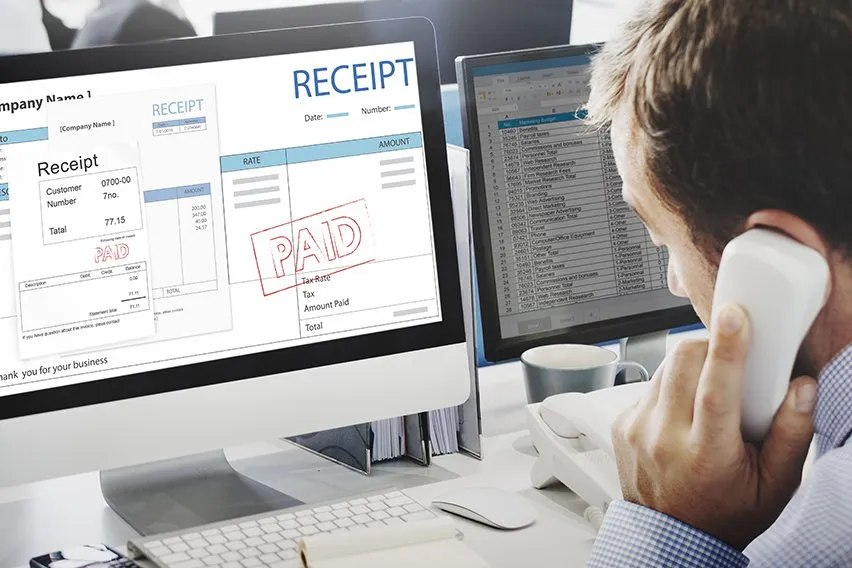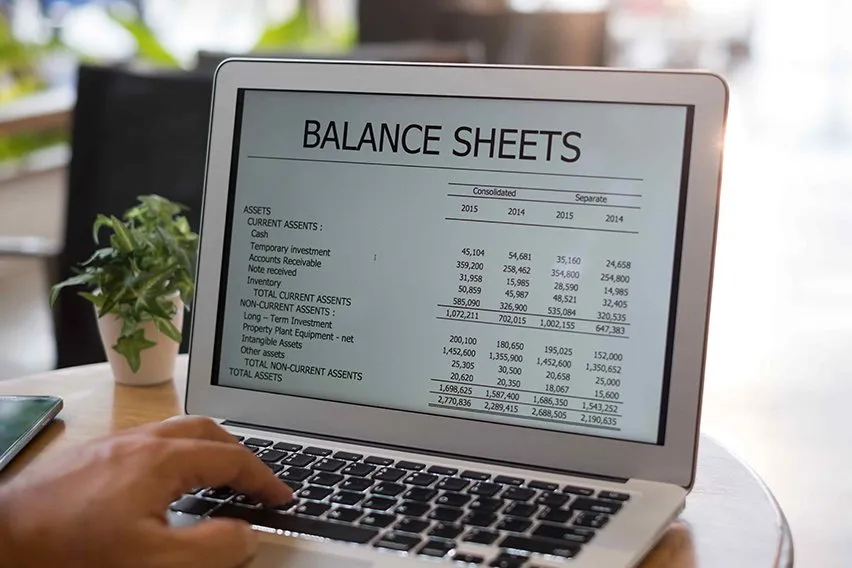What Is a Good Current Ratio?

When you’re running a business of any size, you should always be keeping an eye on your bottom line.
It’s essential that you perform financial forecasting to make sure you have enough capital to cover your costs over the coming fiscal year.
One such method of measuring your financial performance is through the current ratio.
But what exactly is the current ratio and what would be considered a good current ratio? Let’s take a closer look.
In this article, we’ll cover:
How Does the Current Ratio Work?
What Is the Current Ratio Formula?
What Is the Current Ratio?
The current ratio is one of the several liquidity ratios that businesses can use to evaluate their short-term liquidity. Or in other words, the business’ ability to pay short-term obligations.
A short-term obligation could be defined as something that is due to be repaid within one year. This might include a short-term bank loan, accounts payable, lease payments or wages.
The current ratio, otherwise known as the working capital ratio, measures whether a business’ current assets are enough to cover its current liabilities.
When you’re looking at your current ratio, a higher number will indicate better short-term financial health. A 1-1 ratio indicates a company has sufficient current assets to cover its short-term liabilities without having to sell fixed assets. But any number under 1 would indicate that a company cannot cover its liabilities.

How Does the Current Ratio Work?
You would use the current ratio to compare a company’s current assets. Current assets would be defined as assets that are convertible to cash within one year.
A business would want to measure their current ratio to determine whether their obligations can be met with current assets. This would be without the need for selling fixed assets or having to raise further capital.
What Is the Current Ratio Formula?
If you wanted to figure out the current ratio of a business, you would need to follow the current ratio formula. This is a relatively simple formula that divides the current assets of a company by its current liabilities.
The current ratio formula is:
Current Ratio=Current AssetsCurrent Liabilities
What Are Current Assets?
Current assets are any balance sheet items, including liquid assets, that can be converted into cash within one calendar year.
Liquid assets might include cash and other cash equivalents. It would also include accounts receivable and marketable securities. This is because it is generally assumed that you can convert these assets to cash within a year.
Examples of current assets may include:
- Cash: Cash includes any capital that may be held in a checking or savings account. It also includes any coins or currency, such as petty cash, or any bank drafts or money orders.
- Cash Equivalents: You could define cash equivalents as any short-term promissory notes owed to the company. It also includes marketable securities and short-term government bonds.
- Accounts Receivable: This would include any money owed by customers for the purchases of goods or services that were made on credit.
- Inventory: This would be any stock or assets that are held by a business that are intended to be sold to its customers. This includes both finished products as well as any raw materials that haven’t been made into finished goods.
Assets that would not be considered current assets are anything that cannot be converted to cash within one year. These are called fixed assets. They would typically include things such as plants, property and equipment.
Some examples of assets that wouldn’t be included in current assets would be:
- Property: This would include any buildings, land or other real estate that is owned by the business.
- Equipment: Any machinery or technology such as computers and servers. This and any other equipment that is not considered a part of the company’s inventory.
- Vehicles: Vehicles would include any cars, trucks, vans or other vehicles. These would have to be owned by the company and not considered part of the inventory.
What Are Current Liabilities?
Current liabilities are a business’ short-term financial obligations. These would either have to be due immediately or within one calendar year.
These liabilities would include accounts payable, income and payroll taxes. They would also include short-term bank loans and any maturities of long-term debt.
Some examples of current liabilities may include:
- Accounts Payable: These are any obligations owed in the short-term. It may include debts to creditors, vendors and a business’ suppliers.
- Taxes: Every year a business will have to pay a number of taxes. This might include sales taxes, income taxes or PAYE taxes.
- Payroll: Your payroll is the amount currently owed to employees. This includes salaries, wages, any financial bonuses and commissions.
- Loans: Many businesses have a number of loans that are outstanding. Examples of current loan liabilities include any short-term loans. They also include any interest payments to long-term debts.
Things that wouldn’t be considered current liabilities are any long-term financial obligations that are not payable within one calendar year.
These may include:
- Commercial Loans: These loans tend to be long-term so wouldn’t fall under payments in a calendar year.
- Mortgages: Mortgages are considered long-term loans. So whilst the interest payments would be considered a current liability, the overall amount would not.
- Debentures: Debentures are a debt instrument used by companies and the government to issue loans.

What Is a Good Current Ratio?
There is no one-size-fits-all rule when it comes to what would be considered a good current ratio. It may vary depending on what industry the company is in.
The current ratio of a business is a constantly changing and evolving figure. This is due to ongoing payments to liabilities, various assets being liquidated, sales and other sources of revenue.
For this reason, instead of picking a finite number, companies tend to pick a range of what they would consider to be a good current ratio.
To put it generally, investors and business owners would tend to consider a ratio between 1.2-to-1 and 2-to-1 to be the sign of a financially healthy company.
This would indicate that they have the ability to meet short-term liabilities. Whilst also being able to invest a healthy percentage of its capital.
If a business has a ratio that is higher than 2-to-1 then it may suggest that they are not investing short-term assets efficiently. While this is an easier problem to fix than a company that falls below 1-to-1, it’s still not the sign of a well run business.
Key Takeaways
The current ratio is something that business owners should consider when they are analyzing their financial performance.
By using the above formula you can figure out if your business is in a good position, or if there is work that needs to be done.
Are you looking for more business advice on everything from starting a new business to new business practices?
Then check out the FreshBooks Resource Hub.
RELATED ARTICLES


 How to Calculate Markup & Markup Percentage?
How to Calculate Markup & Markup Percentage? Formula for Margin of Error: How To Calculate in Easy Steps
Formula for Margin of Error: How To Calculate in Easy Steps 6 Best Accounts Receivable Software for 2025
6 Best Accounts Receivable Software for 2025 What Is an Unclassified Balance Sheet?
What Is an Unclassified Balance Sheet? What is Negative Cash Flow & How to Manage It?
What is Negative Cash Flow & How to Manage It? What Is BAS (Basic Allowance for Subsistence)?
What Is BAS (Basic Allowance for Subsistence)?